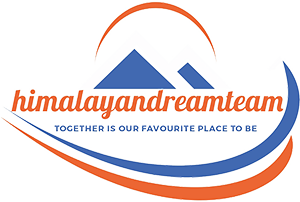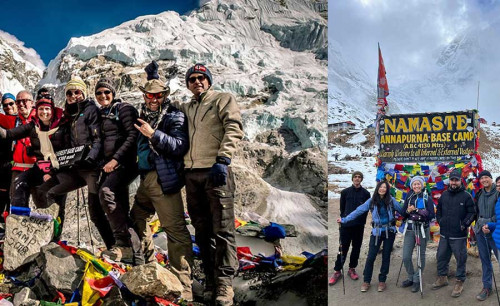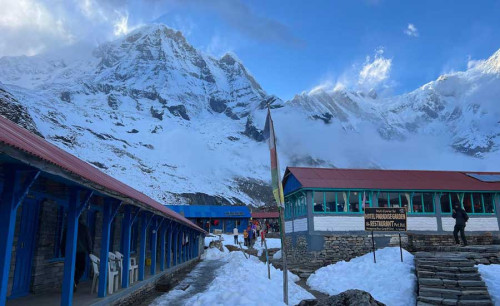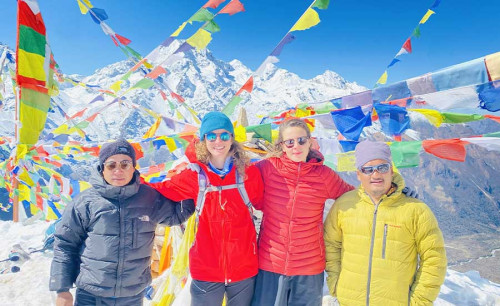Stay Connected on the Trails: Mobile Networks and WiFi Guide for Trekking in Nepal
Published On : 3rd Sep, 2024 By Himalayan Dream Team

Trekking in Nepal offers adventurers a chance to immerse themselves in stunning natural beauty, but staying connected is equally crucial for safety and communication. This comprehensive guide covers the best Internet solutions for high-altitude trekking and the various communication options available on Nepali mountain trails. Whether you're hiking the Annapurna Circuit or embarking on the Everest Base Camp trek, understanding the cellular coverage and WiFi availability in these remote areas is essential for a smooth and connected experience.
For those trekking in the Himalayas, reliable data providers are vital, especially in areas with limited Internet access in remote Himalayan areas. We'll discuss the most reliable data providers for the Annapurna Circuit and the best data plans for Nepal hiking. Additionally, we will explore where you can find WiFi for Himalayan treks, ensuring you're never too far from a connection, even in the world's most rugged terrains. Whether you're posting updates from the trail or ensuring a line of communication for emergencies, these insights will help you make informed decisions on your trek.
Mobile Network Coverage Across Trekking Trails
Nepal's trekking trails offer a diverse range of experiences, with varying levels of remoteness and accessibility, which directly affect mobile network coverage. For those trekking on popular routes like the Annapurna Circuit and Everest Base Camp, staying connected is relatively easy. Major carriers, including Ncell and Nepal Telecom, provide extensive coverage along these trails, ensuring that trekkers can access 3G and 4G services in most areas. This reliable connectivity allows adventurers to stay in touch, share their experiences in real-time, and access essential information throughout their journey.
However, as you venture into more remote and less-traveled regions, the availability of mobile network coverage decreases. In these areas, the signal may be weaker or entirely unavailable, making it important for trekkers to plan accordingly. Whether you're exploring the popular trails or heading off the beaten path, understanding the mobile network coverage in Nepal's trekking regions is crucial for a safe and connected adventure.
Choosing the Right SIM Card
For optimal connectivity while trekking in Nepal, selecting the right SIM card is essential. Ncell and Nepal Telecom are the leading providers, offering reliable prepaid SIM cards with various data packages tailored to meet the needs of trekkers. These SIM cards are designed to keep you connected even in remote areas, ensuring you have access to important information and can stay in touch with loved ones during your trek.
You can easily purchase Ncell and Nepal Telecom SIM cards in major cities such as Kathmandu and Pokhara before you embark on your journey. Both providers offer a range of data plans that cater to different usage needs, allowing you to choose the one that best fits your itinerary and budget. By securing a SIM card from these top providers, you can enjoy seamless connectivity throughout your trekking adventure in Nepal.
Performance of 3G and 4G Networks
In areas with mobile coverage along Nepal's trekking routes, both 3G and 4G networks from providers like Ncell and Nepal Telecom perform reasonably well. These networks offer decent internet speeds, enabling communication and basic internet browsing during your trek. Whether you're staying connected with family, accessing maps, or sharing your journey on social media, these networks provide the necessary support for a smooth experience in regions with good signal strength.
However, as you venture into more remote and less accessible areas, the signal strength may weaken or disappear entirely. This makes it crucial for trekkers to be prepared for potential connectivity challenges. Planning ahead by downloading offline maps, informing loved ones of your itinerary, and carrying a satellite communication device if needed can help ensure safety and peace of mind when the mobile network is unreliable or unavailable.
WiFi Availability Along the Trails
While trekking in Nepal, some tea houses along popular routes like the Annapurna Circuit and Everest Base Camp do offer WiFi access, but it's not something you can count on at every stop. WiFi availability is often limited to more developed areas with better infrastructure, where tea houses and lodges are equipped to provide this service. However, even in these areas, the connection can be slow or unstable due to the challenging terrain and limited resources.
As you venture into more remote regions, WiFi becomes increasingly scarce, with many tea houses lacking the infrastructure to offer any connectivity at all. In these isolated areas, relying on WiFi for communication or internet access is not feasible. Trekkers should be prepared for limited connectivity and consider alternative solutions, such as local SIM cards with data plans or satellite communication devices, to stay connected when WiFi is unavailable.
Cost of WiFi Services
In tea houses along Nepal's popular trekking routes where WiFi is available, it is typically offered as a paid service. The cost for WiFi access can vary, but you can generally expect to pay between $8 to $10 for 24 hours of usage. Given the limited availability and potential high costs, it's important to plan your budget accordingly to ensure you stay connected without overspending during your trek.
To make the most of your WiFi access, consider managing your usage carefully. Prioritize essential communication and necessary online activities to avoid exceeding your budget. Downloading important information, maps, and entertainment in advance can help reduce the need for WiFi while on the trail, allowing you to focus on your trekking experience without worrying about connectivity costs.
Affordability of Mobile Network Services
Mobile network services in Nepal are known for being relatively affordable, especially for trekkers looking to stay connected during their journey. Prepaid data packages from major providers like Ncell and Nepal Telecom are designed to cater to various budgets, offering a range of options that suit different needs. Whether you need a small data package for basic communication or a larger plan for more extensive internet usage, these providers offer flexibility in terms of data volume and validity period, making it easy to find a package that fits your requirements.
The cost of these prepaid data packages depends on factors such as the amount of data included and the duration of the validity period. This allows trekkers to stay connected throughout their trek without the risk of overspending. By choosing the right data plan, you can ensure that you have reliable access to the internet and communication tools, whether you’re sharing your adventure online or keeping in touch with loved ones back home.
Connectivity Challenges in Remote Areas
In remote regions of Nepal where both WiFi and mobile networks are often unavailable, having alternative communication options is crucial for safety. Trekkers venturing into these isolated areas should consider carrying a satellite phone or a personal locator beacon (PLB). These devices offer a reliable way to stay connected, even in the most inaccessible parts of the Himalayas, ensuring that you can reach out for help in case of an emergency.
Satellite phones and personal locator beacons provide peace of mind by allowing you to communicate with rescue teams or loved ones when traditional networks fail. Investing in these tools is particularly important for trekkers exploring off-the-beaten-path routes, where connectivity is minimal or non-existent. By being prepared with these alternatives, you can ensure your safety and security during your trekking adventure in Nepal.
Preparing for Communication Gaps
Before starting your trek in Nepal, it's important to inform your loved ones about potential communication gaps due to the limited availability of mobile networks and WiFi in remote areas. Establishing alternative communication plans is essential for ensuring your safety and keeping your family and friends updated on your progress. One effective approach is to set designated check-in times when you expect to have access to a signal or WiFi, allowing your contacts to stay informed about your location and well-being.
In addition to check-in times, sharing your detailed trekking itinerary with trusted contacts can provide an extra layer of security. This ensures that someone knows your planned route and schedule, making it easier to coordinate assistance if communication is lost for an extended period. By taking these proactive steps, you can help minimize worry for your loved ones and enhance your safety during your trekking adventure in Nepal.
Embracing the Opportunity to Disconnect
While staying connected during your trek in Nepal is important for safety and communication, embracing the opportunity to disconnect can significantly enhance your overall experience. The absence of constant connectivity allows you to fully immerse yourself in the breathtaking natural beauty that Nepal offers. Without the distractions of the digital world, you can engage more deeply with your surroundings, appreciating the stunning landscapes, diverse wildlife, and serene environment that make trekking in Nepal truly unique.
Additionally, moments without connectivity provide a chance to connect with fellow trekkers on a more personal level. Sharing stories, experiences, and challenges with other adventurers can lead to meaningful friendships and a richer trekking experience. By stepping away from the digital world, you can create lasting memories and fully appreciate the tranquility and simplicity that trekking in Nepal brings.
Utilizing Offline Communication Tools
In areas with limited or no connectivity during your trek in Nepal, offline communication tools like maps, guidebooks, and physical signage become essential for a successful journey. These traditional resources provide reliable information and guidance when digital tools are unavailable. By familiarizing yourself with detailed maps and reading up on your route through trusted guidebooks, you can confidently navigate the trails, even in the most remote regions.
Using offline tools effectively not only helps you stay on course but also enhances your overall trekking experience. Physical signage along the trails often provides crucial information about distances, directions, and nearby landmarks. By relying on these resources, you ensure that you can safely and efficiently find your way through the diverse terrains of Nepal, regardless of connectivity challenges. Embracing offline communication tools is a smart strategy for any trekker seeking to explore Nepal's natural beauty with confidence.
Establishing Communication Protocols
During group treks in Nepal, it's essential to establish clear communication protocols with your fellow trekkers to ensure that everyone stays connected and informed. Effective communication can prevent misunderstandings and help maintain group cohesion, especially in challenging environments where connectivity may be limited. Consider designating a point person responsible for managing communication, who will take the lead in sharing important updates, coordinating meet-up points, and ensuring that everyone is aware of the day's plans.
In addition to regular communication, it's crucial to establish emergency procedures before setting out on your trek. This includes agreeing on a plan for what to do if someone gets separated from the group or if there's a need for medical assistance. By discussing and preparing for potential emergencies, your group can respond quickly and effectively, ensuring the safety and well-being of all trekkers. Clear communication and preparedness are key to a successful and enjoyable group trekking experience in Nepal.
Adapting to Changing Conditions
When trekking in Nepal, it's important to be prepared for changing connectivity conditions along your route. Signal strength can fluctuate significantly due to factors such as weather, terrain, and the local infrastructure. Understanding that these conditions are variable will help you remain flexible and patient as you navigate through different environments. Whether you're relying on mobile networks or WiFi, connectivity may be strong in some areas and non-existent in others, so it's essential to adapt to these changes as they occur.
To make the most of your trekking experience, plan ahead by downloading offline maps and necessary information before you lose connection. This ensures that you have access to crucial resources even in areas with poor signal strength. By staying adaptable and patient with the changing connectivity, you can focus more on enjoying the natural beauty of Nepal and less on the challenges of staying connected.
Internet Solutions For High-Altitude Trekking
| Tea Houses Wifi | While trekking in the Himalayas, internet access is available, but it comes with significant limitations. Some teahouses and guesthouses along the trails provide WiFi, but its reliability varies widely. Due to the challenging geography and remote locations, these connections are often slow and unstable, with service becoming increasingly scarce as you ascend to higher altitudes. In most areas, WiFi can be accessed for a fee ranging between Rs 400 and Rs 600 ($3-$5 USD), with availability common in teahouses and lodges up to Samdo town. However, as you continue beyond this point, particularly toward Bimthang, internet connectivity becomes extremely limited or entirely absent. We advise you not to depend on tea house WiFi for your vital communications. You could get a local SIM card or, if you really need to be connected while trekking, even a satellite device. |
| Everest Link Card |
Everest Link has emerged as a trailblazer in providing wireless Internet services to some of the most remote Himalayan trekking regions. Initially launched in the Everest area, the service has since expanded to cover popular trekking routes, including Mera Peak, the Manaslu Circuit, Upper Mustang, and Langtang Valley. This expansion has transformed how trekkers communicate, enabling them to share their journeys on social media in real time, even from some of the most isolated locations. The company offers prepaid cards and various package deals, which are conveniently available at shops and lodges along the trekking routes. Trekkers can choose between a 20 GB card for NPR 2000 (approximately $20) or a 30 GB card for NPR 3000 (around $30), with each package valid for up to 30 days. These options are much more cost-effective compared to traditional Wi-Fi services provided by teahouses. Everest Link’s extensive coverage includes iconic locations such as Everest Base Camp, Gokyo Ri, and Manaslu Base Camp. This allows trekkers to stay connected while enjoying breathtaking Himalayan vistas. Sales stations are strategically located in key spots like Kathmandu, Lukla, Namche Bazaar, Dingboche, and Gokyo, ensuring that adventurers can easily purchase and activate their internet services as they journey through the mountains. |
| Nepal Airlink Card | Nepal Airlink was established in Solukhumbu in 2016 as an ISP exclusively for providing access to the Internet in rural parts of Nepal, more precisely in the Everest Region. Their goal is to provide connectivity even in the remotest areas, offering both prepaid and postpaid services to the guesthouses along the trekking routes. This Airlink WiFi is available in almost all of the teahouses on the way but can only log in on one device. It comes with various pricing packages:
Nepal Airlink cards can be purchased at over 10 different locations, including popular spots such as Phaplu, Beni, Junbesi, Thupten Choiling, Phera, Ringmu, Taksindu Pass, Taksindu, Nunthala, Juving, Kharikhola, Bupsa, Pangum, and Khartey. For trekkers beginning their journey from Phaplu/Salleri or Jiri, it's important to know that regular SIM cards may not provide consistent service until reaching Lukla. In these areas, Nepal Airlink's WiFi service becomes an essential tool for staying connected during your trek. Notably, at the Pyramid hotel along the Everest Base Camp trek route, both Nepal Airlink and Everest Link WiFi services are available, with the WiFi cost included as part of the room charge. |
| Best Sim Card Data Packages to Consider For Trekking in Nepal | Nepal Telecom (NTC)
The NTC network is a favorite among trekkers in Nepal due to its extensive coverage, particularly in rural regions. NTC's reach extends across much of Nepal, including the popular trekking routes like Everest Base Camp. Its signal often penetrates even the more remote areas, making it a reliable choice for adventurers. In the Annapurna region, 3G services are generally available, although full coverage is not guaranteed in every location. However, it’s important to acknowledge that network connectivity can become challenging at higher elevations. The combination of weather conditions and altitude often disrupts both internet and mobile connections, making NTC's signal less reliable as you ascend. NTC Data Packages:
|
Ncell
Ncell is another highly favored choice among trekkers visiting Nepal. As a local telecom operator, and a subsidiary of the Swedish company TeliaSonera, Ncell offers extensive coverage throughout the country, including in many of the popular trekking regions.
Ncell is well-regarded for its faster and more reliable network, making it a preferred option for many travelers. In fact, Ncell played a significant role in bringing 3G mobile service to the Everest region during the 2010s, allowing trekkers to stay connected with the rest of the world in real time from one of the most remote locations on Earth.
For visitors, Ncell offers a dedicated SIM card known as the "Visit Nepal SIM," which is designed to provide consistent and high-quality connections across the country. Recharge cards for Ncell, as well as NTC, can be easily found in shops throughout Kathmandu and other major cities.
Despite its strong performance in many areas, Ncell’s network can face challenges at higher altitudes, where connectivity may become less reliable. For this reason, many trekkers opt to carry both Ncell and NTC SIM cards to ensure more comprehensive coverage during their journeys.
Ncell Data Packages
| Ncell Data Packages | |||
|---|---|---|---|
| Duration | Price (NPR) | Data | Additional Features |
| Hourly & 1 Day | |||
| 1 Hour | 25 | Unlimited | - |
| 1 Day | 30 | 1 GB | - |
| 1 Day | 35 | 1.25 GB | - |
| 1 Day | 50 | Unlimited | - |
| 3 Day & 7 Day | |||
| 3 Days | 47 | 1 GB | - |
| 3 Days | 65 | 2 GB | - |
| 7 Days | 99 | 2 GB | 49 Min + 49 SMS + 1 GB Social |
| 7 Days | 129 | 4.5 GB | - |
| 7 Days | 150 | 5 GB | - |
| 7 Days | 200 | 4 GB | Nonstop (FB, IG & YT) |
| 28 Days | |||
| 28 Days | 299 | 7 GB | - |
| 28 Days | 599 | 30 GB 4G Home + 30 GB Away | - |
| 28 Days | 749 | 90 GB 4G Home + 30 GB Away | 100 Min Free All network |
| 28 Days | 799 | 25 GB + 8 GB Social | Unlimited Call |
| 28 Days | 999 | 50 GB + 10 GB Social | Unlimited Call |
| 28 Days | 1499 | 100 GB + 15 GB Social | Unlimited Call |
| 28 Days | 399 | 8 GB + 4 GB Social | 399 Min + 399 SMS |
| 28 Days | 499 | 12 GB + 5 GB Social | 499 Min + 499 SMS |
| 28 Days | 599 | 20 GB + 6 GB Social | 599 Min + 599 SMS |
| How to Obtain a Ncell SIM Card | |
|---|---|
| Location | Kathmandu has easy access to Ncell SIM cards, which can be purchased at various shops and outlets. |
| Required Documents |
|
| Process | Fill out a registration form with the necessary details. |
| Cost | Pay Rs 100 (approximately $1) |
Wifi and Date Access on Everest Base Camp Trek
| Location | Wi-Fi Cost | Mobile Service | Wi-Fi Signal & Availability |
|---|---|---|---|
| Lukla (2840 Metres) | USD 4 to 5 (Unlimited) | NTC and Ncell 4G | Very Good Available at lodges, cafes, and internet cafes. Most lodges and tea houses offer WiFi, with free internet at Lukla Starbucks with purchase. Dedicated internet cafes are near the airport. |
| Phakding (2610 Metres) | USD 5 to 7 (Unlimited) | NTC and Ncell 3G-4G | Good Available at guesthouses, bakeries, and some restaurants. The Everest Link network may have a stronger signal in some places. |
| Namche Bazaar (3440 Metres) | USD 8 to 12 (Unlimited) | USD 2 to 3 (per Hour) | NTC and Ncell 3G-4G | Excellent Available at cafes, lodges, bakeries, and internet cafes. Namche Bazaar Bakery offers free internet with purchase. |
| Tengboche (3810 Metres) | USD 6 to 8 (per Hour) | NTC and Ncell 2G-3G | Fair Available at select lodges and tea houses near the monastery. Connectivity begins to drop off with patchy mobile data. |
| Dingboche (4410 Metres) | USD 8 to 10 (per Hour) | NTC and Ncell 2G-3G (intermittent) | Fair to Poor Available at certain teahouses and lodges. Everest Link service works better than mobile networks in some places. |
| Lobuche (4910 Metres) | USD 10 to 12 (per Hour) | NTC and Ncell 2G-3G | Good Available at select lodges and teahouses. Better connectivity than expected at this altitude; Everest Link service is also available. |
| Gorak Shep (5140 Metres) | USD 12 to 15 (per Hour) | NTC and Ncell 2G-3G (very intermittent) | Poor to Fair Available at a few teahouses and lodges. The last chance for reliable internet before reaching Everest Base Camp. |
| Everest Base Camp (5364 Metres) | Unavailable | NTC and Ncell 2G-3G (highly unreliable) | Unavailable Only mobile data may be available, but it is unreliable due to the extreme altitude and remote location. |
| Pheriche (4371 Metres) | USD 7 to 9 (Unlimited) | NTC and Ncell 3G | Good Available at lodges, the HRA clinic, and some cafes. Better connectivity than higher locations, with WiFi provided by several lodges. |
WiFi and Data Connectivity in Manaslu Circuit Trek
| Location | Wi-Fi Cost | Mobile Service | Wi-Fi Signal & Availability |
|---|---|---|---|
| Kathmandu (1,400 metres) | Often free in hotels; nominal charges in internet cafes | NTC and Ncell 4G | Excellent Available in hotels, cafes, restaurants, and dedicated internet cafes. Kathmandu offers good telephone and internet services, with 4G coverage by both NTC and Ncell. |
| Soti Khola (730 metres) | USD 2-5 for paid service in teahouses | Strong NTC signal; VSAT phones available | Good Available in all guesthouses with extra charges for Wi-Fi. Soti Khola is the first overnight stop with good NTC signal coverage and VSAT phone availability. |
| Maccha Khola (930 metres) | USD 2-5 | NTC signal available; Ncell has low reception | Poor Use NTC data packages for internet. Satellite phones are available in some teahouses, but Wi-Fi services are limited. |
| Jagat (1,340 metres) | USD 2-6 | NTC network accessible; VSAT phones in teahouses | Fair Wi-Fi is available in rest-stops with extra charges. Similar connectivity to Maccha Khola with only NTC SIM card network access. |
| Deng (1,860 metres) | USD 2-6 | No phone network | Fair Wi-Fi services are available in teahouses for an added fee. Mobile networks are generally unreachable, with limited connectivity. |
| Namrung (2,630 metres) | USD 2-10 | Good NTC network reception | Good Available in teahouses. Better connectivity compared to Deng, with decent NTC network reception and paid Wi-Fi services. |
| Lho (3,180 metres) | USD 2-10 | NTC works; Ncell unavailable; satellite phones available | Good Available in all four guesthouses. NTC SIM cards work well, while Ncell reception may be absent. Wi-Fi is provided in all teahouses. |
| Sama Gaun (3,530 metres) | USD 2-10 | Limited NTC signal; VSAT phone services available | Good Available in six guesthouses. Wi-Fi is readily accessible, although NTC network coverage is sometimes unreliable due to altitude. |
| Samdo (3,875 metres) | USD 2-10 | No NTC/Ncell service; no telephone services in teahouses | Fair Available in three teahouses. Limited connectivity with no telephone services, but Wi-Fi is available for an extra cost. |
| Dharamsala (4,460 metres) | USD 2-10 | No network or satellite phone services | None No internet or phone services available. Complete communication blackout in Dharamsala. |
| Bimthang (3,720 metres) | USD 2-10 | No NTC/Ncell network; VSAT phone services available | Fair Available in some of the five guesthouses. Limited communication options with no network coverage, but VSAT phone and Wi-Fi services are available. |
| Dharapani (1,860 metres) | USD 2-10 | NTC, Ncell partially available | Good Available in most teahouses. Better connectivity on the descent with both mobile networks and satellite phones accessible. |
Wifi or Data Access on Langtang Valley Trek
| Location | Wi-Fi Availability | Data Availability |
|---|---|---|
| Syabrubesi | Available | Available |
| Lama Hotel | Available | Limited |
| Langtang Village | Available | Very Limited |
| Mundu | Available | Very Limited |
| Kyanjin Gompa | Available | Very Limited |
| Beyond Kyanjin Gompa | Not Available | Not Available |
Conclusion
In conclusion, staying connected on the trekking trails of Nepal involves a combination of strategies to ensure reliable communication. Understanding the availability of mobile networks and WiFi is crucial, as coverage can vary greatly depending on the location. Selecting the right SIM card from providers like Ncell or Nepal Telecom, which offer the best coverage in popular trekking areas, is an important step in maintaining connectivity. Additionally, being prepared for connectivity challenges in remote regions by downloading offline maps and having alternative communication methods in place will help you stay connected even in the most isolated areas.
By following these tips and planning ahead, you can enhance your trekking experience in Nepal while ensuring your safety and ability to stay in touch with the world. Whether you're navigating the well-trodden paths of the Annapurna Circuit or exploring the remote trails of the Manaslu Circuit, staying connected allows you to share your journey, access important information, and communicate in case of emergencies. Proper preparation will help you enjoy the beauty of Nepal's landscapes with peace of mind, knowing you can stay connected when it matters most.
Recent Posts
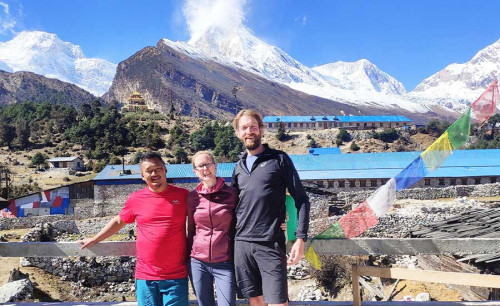
24th Nov, 2025
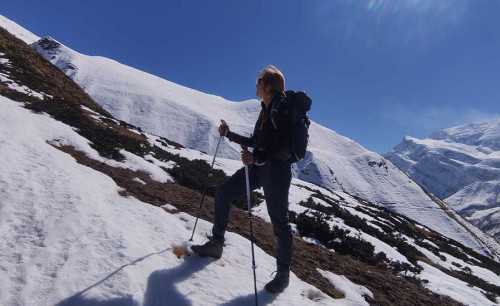
21st Nov, 2025
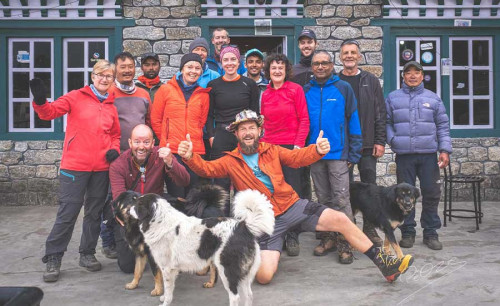
10th Nov, 2025
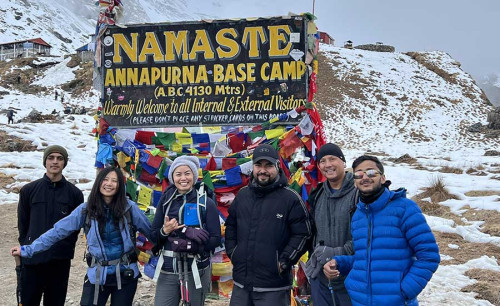
9th Nov, 2025

25th Oct, 2025

22nd Oct, 2025

17th Oct, 2025

17th Oct, 2025

13th Oct, 2025

12th Oct, 2025

